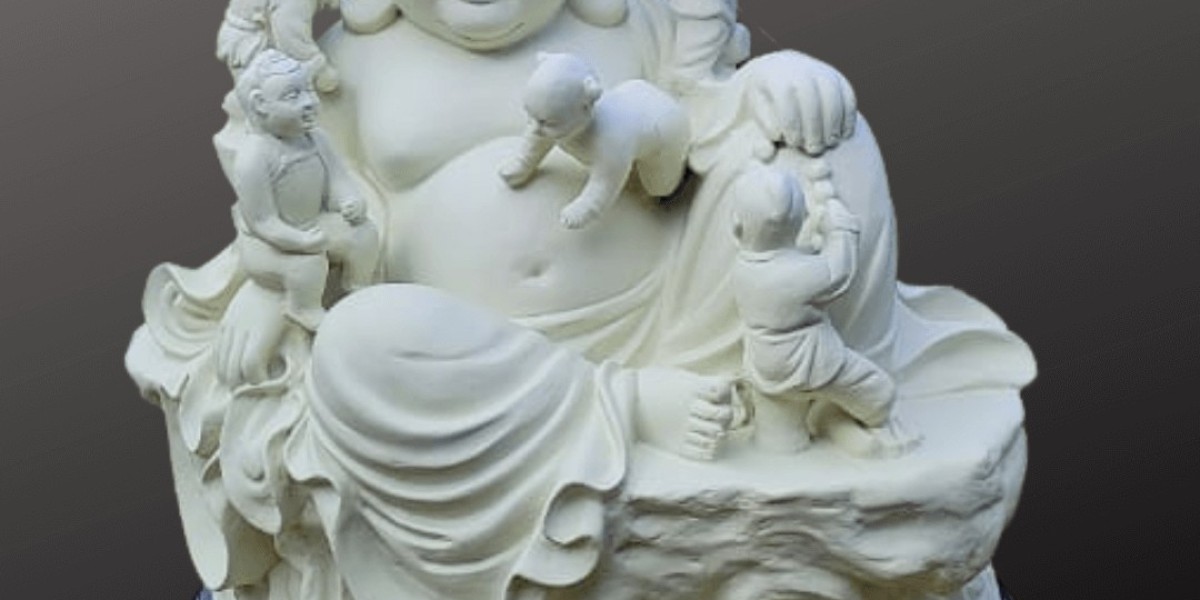When it comes to adding a Buddha statue to your home or workplace, the options are vast—each carrying a distinct meaning, energy, and symbolism. Among the most popular are the Laughing Buddha Statue and the Meditating Buddha Statue. Both represent positivity, but in very different ways. Understanding these differences is crucial if you want to choose the right one for your space. In this guide, we’ll explore the origins, meanings, benefits, and ideal placements of Laughing Buddha and Meditating Buddha statues, helping you make an informed choice that aligns with your intentions and lifestyle.
Why Do People Keep Buddha Statues
Buddha statues are not just decorative pieces—they carry spiritual significance and radiate positive energy. In Buddhism and Feng Shui practices, they are symbols of peace, prosperity, and enlightenment. Many people place them at home, in offices, gardens, or meditation rooms to invite balance, harmony, and good fortune.
However, different postures of Buddha convey different messages and energies. The Laughing Buddha and Meditating Buddha differ greatly in purpose and symbolism. Before deciding which one to choose, let’s dive into their origins and meanings.
The Laughing Buddha: Symbol of Joy and Prosperity
Who is Laughing Buddha?
The Laughing Buddha, often mistaken for Gautam Buddha, is actually Budai (or Hotei in Japanese), a Chinese monk from the 10th century who became a symbol of happiness and abundance. His jolly smile, round belly, and carefree demeanor make him a universal representation of joy and prosperity.
In Chinese culture and Feng Shui, the Laughing Buddha is considered a bringer of wealth, luck, and happiness. That’s why you’ll often see him in homes, restaurants, offices, and even businesses.
Symbolism of Laughing Buddha Statue
Wealth and Abundance: Often shown carrying a sack of treasures or gold ingots.
Happiness and Positivity: His smiling face represents contentment.
Good Luck: Believed to remove stress and attract opportunities.
Protection from Negativity: Considered a powerful charm against misfortune.
Best Placement for Laughing Buddha
To maximize the positive energy:
Place the Laughing Buddha facing the entrance door to welcome good fortune.
Avoid placing it on the floor or in the bathroom.
Ideal spots: living room, office desk, or main hallway.
Height matters: keep it at least eye-level for respect.
Who Should Choose a Laughing Buddha Statue?
If you want:
Wealth & financial success
Stress-free vibes
An uplifting environment
Then the Laughing Buddha statue is perfect for you. Business owners, entrepreneurs, and those seeking financial stability often prefer it.
The Meditating Buddha: Symbol of Peace and Spiritual Growth
Who is Meditating Buddha?
The Meditating Buddha represents Gautam Buddha, the founder of Buddhism, in his deep state of meditation under the Bodhi tree. This posture reflects his quest for enlightenment and inner peace.
Symbolism of Meditating Buddha
Inner Peace: Promotes calmness and mindfulness.
Spiritual Growth: Helps in meditation and self-realization.
Healing Energy: Brings balance to the home.
Focus and Discipline: Ideal for those seeking clarity in life.
Best Placement for Meditating Buddha
To create a serene environment:
Place it in meditation rooms, study areas, or gardens.
Avoid noisy, cluttered spaces.
Face it towards the east for spiritual energy.
Who Should Choose a Meditating Buddha?
If you want:
Mental clarity
Peaceful surroundings
Better meditation practice
Personal growth
Then the Meditating Buddha statue is the right choice for your home or workplace.
Laughing Buddha vs Meditating Buddha: Key Differences
| Aspect | Laughing Buddha | Meditating Buddha |
|---|---|---|
| Origin | Chinese monk (Budai) | Gautam Buddha |
| Symbolism | Wealth, happiness, good luck | Peace, focus, enlightenment |
| Ideal For | Businesses, financial growth | Homes, spiritual practice |
| Best Placement | Facing entrance or office desk | Meditation area, quiet spaces |
| Energy | Joyful, vibrant, uplifting | Calm, grounding, introspective |
Which One to Choose for Your Home or Office?
The choice depends on your intention:
Want financial stability and positivity?
➡ Go for the Laughing Buddha Statue.Want peace, mindfulness, and spiritual growth?
➡ Choose the Meditating Buddha Statue.
You can also keep both statues in different areas of your home—Laughing Buddha in the living area for prosperity, and Meditating Buddha in the study or meditation room for calmness.
Tips for Buying an Authentic Buddha Statue
Material Matters: Choose from brass, wood, stone, or fiber for durability.
Right Size: Larger statues have a stronger presence but choose based on space.
Authenticity: Avoid cheap imitations; a well-crafted statue radiates more energy.
Respectful Placement: Keep it clean and avoid placing it on the ground.
Conclusion
Both Laughing Buddha and Meditating Buddha statues bring positive energy, but in different ways. If your goal is joy and abundance, the Laughing Buddha statue is a fantastic choice. For those seeking inner peace and mindfulness, a Meditating Buddha is ideal. Before you buy, reflect on your intentions, available space, and the energy you want to invite into your life. Remember, these statues are not just art—they’re symbols of a meaningful philosophy that can transform your home and your mindset.







